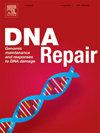Using the safety scissors: DNA resection regulation at DNA double-strand breaks and telomeres
IF 2.7
3区 生物学
Q2 GENETICS & HEREDITY
引用次数: 0
Abstract
DNA resection is a universal process in genome maintenance by which one strand of DNA is degraded, leaving the other strand intact. This sometimes highly processive process is critical for many forms of DNA damage repair, replication-coupled repair, meiotic recombination, and telomere maintenance. Therefore, resection must be tightly regulated to prevent genome instability and promote faithful and accurate repair. Here, we review what is known about how resection functions and how it is controlled, using DNA double-strand break repair and telomere maintenance as examples. We address how resection is regulated in three independent steps: resection initiation, long-range processing, and termination. By addressing these mechanisms in the context of both pathways, we attempt to provide an overview of the similarities as well as the outstanding questions regarding how this robust process is regulated.
使用安全剪刀:DNA双链断裂和端粒的DNA切除调控
DNA切除是基因组维持中的一个普遍过程,其中一条DNA链被降解,留下另一条完整的DNA链。这种有时高度程序化的过程对于多种形式的DNA损伤修复、复制偶联修复、减数分裂重组和端粒维持至关重要。因此,切除必须严格控制,以防止基因组不稳定,促进忠实和准确的修复。本文以DNA双链断裂修复和端粒维护为例,回顾了目前已知的切除功能及其控制机制。我们在三个独立的步骤中解决了切除是如何调节的:切除起始,远程处理和终止。通过在这两种途径的背景下解决这些机制,我们试图提供相似之处的概述以及关于如何调节这一强大过程的突出问题。
本文章由计算机程序翻译,如有差异,请以英文原文为准。
求助全文
约1分钟内获得全文
求助全文
来源期刊

DNA Repair
生物-毒理学
CiteScore
7.60
自引率
5.30%
发文量
91
审稿时长
59 days
期刊介绍:
DNA Repair provides a forum for the comprehensive coverage of DNA repair and cellular responses to DNA damage. The journal publishes original observations on genetic, cellular, biochemical, structural and molecular aspects of DNA repair, mutagenesis, cell cycle regulation, apoptosis and other biological responses in cells exposed to genomic insult, as well as their relationship to human disease.
DNA Repair publishes full-length research articles, brief reports on research, and reviews. The journal welcomes articles describing databases, methods and new technologies supporting research on DNA repair and responses to DNA damage. Letters to the Editor, hot topics and classics in DNA repair, historical reflections, book reviews and meeting reports also will be considered for publication.
 求助内容:
求助内容: 应助结果提醒方式:
应助结果提醒方式:


